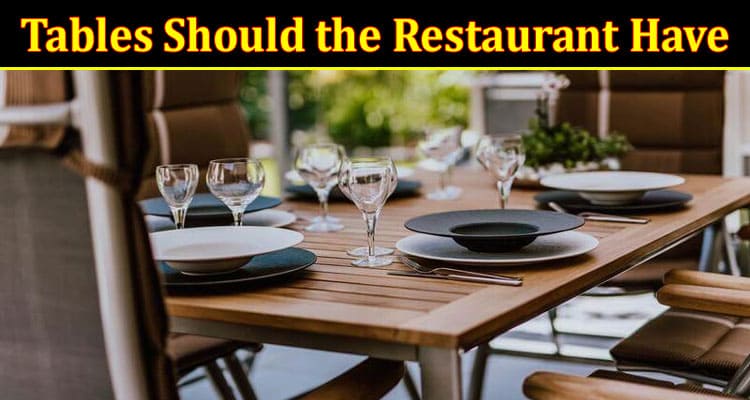It is relatively straightforward. How difficult could it be to choose tables for your restaurant? This is, again, another deceptively straightforward decision. Of course, if you don’t care what your customers think of your restaurant, you can throw in any old tables you want. If you are one of the many restaurant owners that care about the diner experience, you should give your tables more thought than others.
There are five traditional types of restaurant tables to pick from, but when deciding which tables to install in your dining room, keep your visitors and their dining experience in mind. You may select more than one table design for a variety of reasons.
RESTAURANT TABLE DESIGN
1. THE CLASSIC BOOTH
“Can we have a booth instead of just a table?” If you’ve ever worked as a hostess, you’ve probably heard this question from diners as they approach your dining room. It’s easy to see why they’re so popular when you think about it. Booths provide customers of all ages with a comfortable, cosy, and welcoming dining experience. They give a sense of privacy, seclusion, and additional space for guests to spread out. They’re also a good choice for restaurants with narrow aisles because they generate less traffic. After all, servers only approach them from one side.
While booths are usually very pricey initially, they save more money in the long run. Because a four-person booth takes up around 3,000 square inches of floor space, whereas a table for four with chairs and a base takes up upwards of 5,000, choosing booths for your restaurant will save you room while allowing for a higher capacity.
2. PICNIC-STYLE BANQUET TABLE
Many bars and restaurants use large picnic or banquet-style tables in their dining area, one of the more flexible options and have gained favour in recent years. When we think of big banquet tables, we often think of them being utilised in huge, casual businesses like breweries and beer halls.
Banquets and long picnic tables help host larger groups because people can determine their required personal space. When large parties don’t occupy them, their size and casual atmosphere enable smaller groups of restaurant patrons to socialise and dine together.
Harpoon Brewery in Boston does an excellent job with picnic or banquet tables, as shown below. They are a perfect example of selecting table designs that complement their brand. If they had picked different furniture, such as booths or coffee tables, the ambience would have been radically different.
3. HIGH-TOP TABLE STOOL
Elevated tables and stools provide the most versatility in your dining space. If a table for six people and a party of seven or eight people arrive, the additional person can easily stand at the table or grab another stool.
In addition to providing physical flexibility, high-top tables encourage socialising with bigger groups of people. You can easily add a few people to the table or move the tables closer together so people can quickly join or leave the party using table tops.
The institution that is a hotspot for “after-work-drinks” where coworkers can come and go as they want when they complete work is a famous use case for high tops and stools. As previously said, you want your tables to contribute to the overall atmosphere of your restaurant. High tops with stools are a terrific approach to establishing a relaxed tone for more casual pop-in, pop-out joints. This setting allows parties to congregate around a few high tops while chatting, dining, and drinking.

